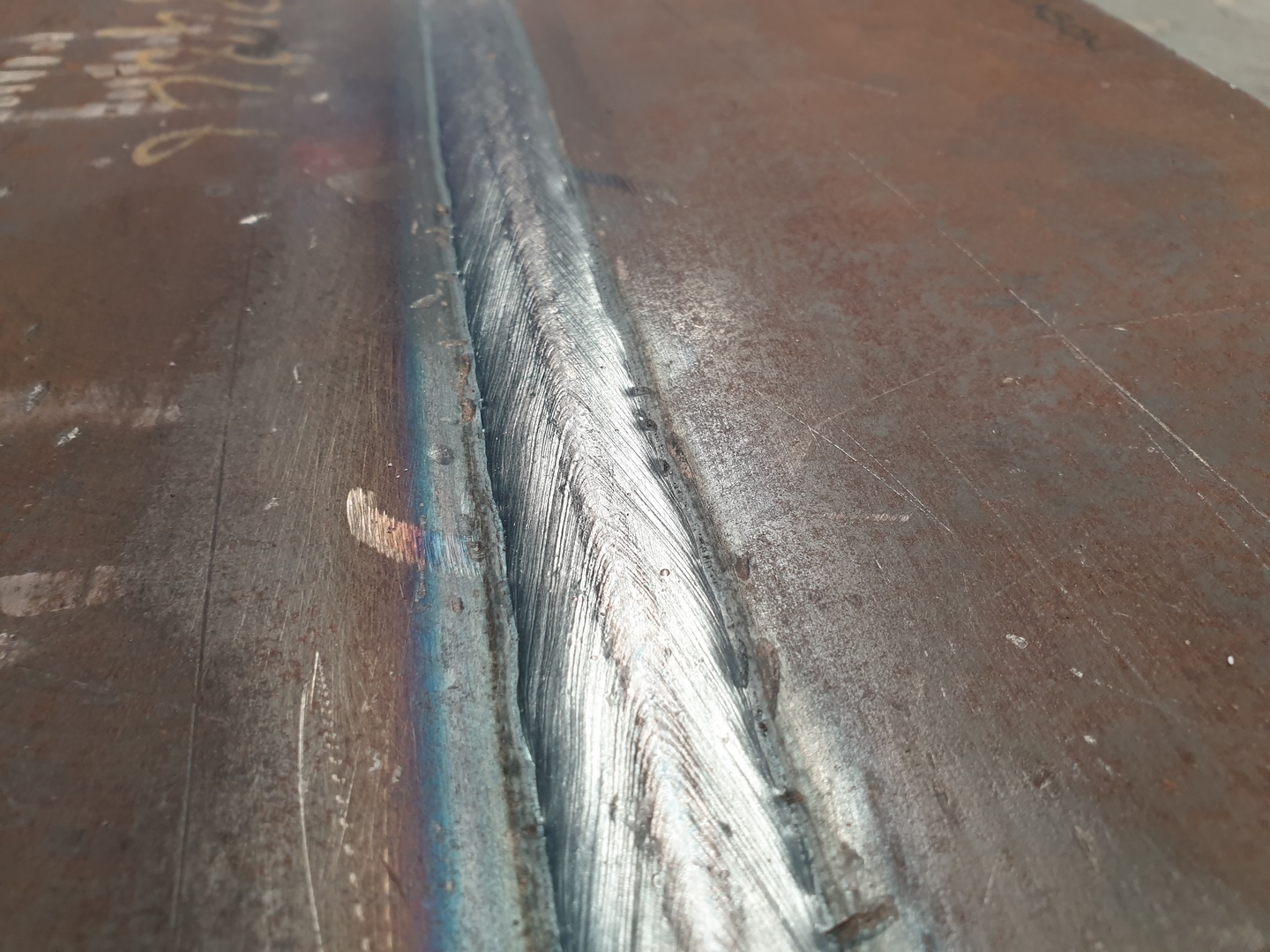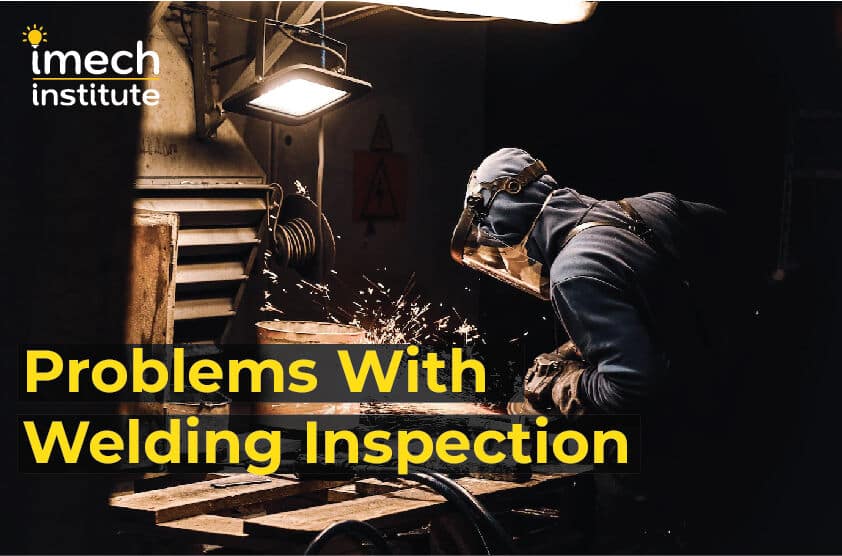How Welding Inspection Racine Ensures Security and Compliance
How Welding Inspection Racine Ensures Security and Compliance
Blog Article
Cutting-edge Strategies to Fillet Weld Assessment and Testing: Enhancing Weld High Quality and Conformity Specifications
In the realm of welding, the top quality and stability of fillet welds play a vital duty in making certain the architectural strength and reliability of numerous industrial components. With the consistent drive for boosted performance and compliance with strict standards, the expedition of innovative approaches to fillet weld examination and testing has actually ended up being important. As sectors progress, the traditional approaches may no more be enough in fulfilling the needs of modern-day welding applications. By embracing innovative technologies and methodologies, a new perspective of possibilities arises in the realm of weld quality assessment and adherence to compliance standards.
Advanced Non-Destructive Testing Approaches
Making use of state-of-the-art technologies, progressed non-destructive screening techniques play a crucial duty in guaranteeing the integrity and high quality of fillet welds. These approaches, such as phased range ultrasonic screening (PAUT) and magnetic particle screening (MPT), deal detailed insights right into the weld's inner structure without causing any kind of damages to the material. PAUT, as an example, makes use of several ultrasonic components to check the weld from various angles, offering an extensive visualization of possible issues like lack of combination or splits.
Similarly, MPT is reliable in spotting surface-breaking issues by applying a magnetic field and iron particles to the weld location. This technique is especially useful for recognizing suspensions that may compromise the weld's stamina. By utilizing these sophisticated non-destructive screening methods, weld inspectors can accurately evaluate the top quality of fillet welds, making certain conformity with sector criteria and guidelines. The capability to identify problems at an early stage not only boosts weld top quality however additionally avoids costly rework or failures in architectural integrity, underscoring the relevance of these ingenious testing techniques in welding assessments.
Robotics and Automation in Inspection
The combination of robotics and automation has revolutionized the examination procedure for fillet welds, boosting efficiency and accuracy in quality analysis. Robotics offer exact control and repeatability in evaluating welds, guaranteeing regular and reliable outcomes. Automated systems can be configured to adhere to certain inspection paths, guaranteeing detailed coverage of welds and lowering the risk of human error.
Robot assessment systems outfitted with advanced sensors can identify and determine weld features with high accuracy, supplying thorough information for analysis. These systems can recognize issues such as splits, absence of fusion, and porosity, enabling prompt corrective actions to be taken. Furthermore, robotics and automation permit for real-time information collection and analysis, providing immediate responses to drivers and helping with quick decision-making processes.
In addition, using robotics and automation in fillet weld assessment improves total efficiency by reducing examination times and enhancing evaluation throughput. By streamlining the inspection procedure, suppliers can ensure weld top quality and compliance criteria are satisfied efficiently, inevitably leading to set you back financial savings and enhanced item top quality.
Using Artificial Knowledge for Analysis
Synthetic intelligence plays a pivotal function in enhancing the efficiency and accuracy of analysis in fillet weld assessment procedures. AI algorithms can quickly go to this web-site refine substantial amounts of data from weld inspections, finding issues or variances that may be challenging to determine with the naked eye - Welding Inspection Racine.
Furthermore, AI systems can find out from previous evaluation information, constantly enhancing their ability to determine possible flaws and variances in fillet welds. This adaptive understanding capacity enhances the general quality assurance procedure, minimizing the chance of human mistake and making certain that welds meet the needed requirements. By incorporating expert system right into fillet weld evaluation, sectors can achieve greater degrees of efficiency, consistency, and conformity in their examination techniques.
Portable Tools for On-Site Inspection
 Enhancing field examination performance, the fostering of mobile devices reinvents on-site evaluation procedures for fillet welds. These tools supply versatility and comfort, enabling assessors to conduct comprehensive evaluations in different places, consisting of remote or tough environments. Mobile devices such as ultrasonic testing tools, magnetic bit evaluation devices, and electronic radiography systems supply real-time data and high-resolution imaging capacities, enabling fast decision-making and instant responses on weld quality.
Enhancing field examination performance, the fostering of mobile devices reinvents on-site evaluation procedures for fillet welds. These tools supply versatility and comfort, enabling assessors to conduct comprehensive evaluations in different places, consisting of remote or tough environments. Mobile devices such as ultrasonic testing tools, magnetic bit evaluation devices, and electronic radiography systems supply real-time data and high-resolution imaging capacities, enabling fast decision-making and instant responses on weld quality.One considerable advantage of mobile tools is their capability to streamline inspection treatments, decreasing downtime and improving general efficiency. Assessors can easily carry these devices to different job sites, getting Clicking Here rid of the requirement for transporting hefty equipment or components to off-site centers. In addition, the transportability of these devices advertises cost-effectiveness by minimizing transport costs and speeding up evaluation timelines.
Additionally, the use of mobile tools for on-site evaluation promotes proactive quality assurance steps, as assessors can promptly determine and deal with any possible welding flaws or discrepancies. By integrating these ingenious innovations into on-site examination methods, welding experts can guarantee conformity with sector standards and enhance weld top quality, ultimately bring about boosted architectural integrity and security in numerous welding applications.
Assimilation of Information Monitoring Equipment
Having actually enhanced on-site inspection processes through the application of portable tools, the following stage includes the seamless integration of information administration systems to even more improve efficiency and data evaluation abilities in fillet weld examination and screening. Welding Inspection Racine. By incorporating data administration systems right into the examination procedure, organizations can improve data collection, storage, and evaluation. This combination permits real-time surveillance of weld quality, instant identification of issues, and timely decision-making to fix any issues that might emerge throughout the assessment procedure
Data monitoring systems play an essential duty in streamlining examination data, assisting in very easy gain access to for authorized personnel, and making certain information integrity and security. With the integration of these systems, examiners can produce detailed reports, track historical data for pattern evaluation, and improve site web general process effectiveness. Additionally, the combination of information management systems allows seamless interaction in between different stakeholders included in the evaluation process, fostering partnership and boosting general high quality control actions. Ultimately, the combination of information monitoring systems serves to boost the standards of fillet weld assessment and screening, making sure conformity with market regulations and enhancing weld high quality.
Conclusion
In conclusion, innovative strategies to fillet weld evaluation and screening have actually substantially enhanced weld top quality and compliance requirements. Advanced non-destructive testing methods, robotics, automation, expert system, mobile tools, and data management systems have changed the means weld inspections are performed. By making use of these modern technologies, sectors can make sure that welds meet the called for top quality criteria and policies, eventually enhancing total efficiency and safety and security in welding procedures.

By employing these advanced non-destructive screening techniques, weld examiners can precisely assess the high quality of fillet welds, guaranteeing conformity with industry criteria and laws. Portable devices such as ultrasonic testing tools, magnetic particle examination tools, and electronic radiography systems supply real-time data and high-resolution imaging capacities, making it possible for fast decision-making and immediate feedback on weld high quality.
Having actually maximized on-site evaluation processes with the utilization of mobile devices, the following phase involves the smooth assimilation of data monitoring systems to even more enhance efficiency and information evaluation capacities in fillet weld inspection and testing (Welding Inspection Racine). Inevitably, the combination of data administration systems serves to elevate the requirements of fillet weld inspection and testing, making sure conformity with market policies and enhancing weld high quality
 In conclusion, cutting-edge techniques to fillet weld assessment and screening have substantially enhanced weld high quality and conformity standards.
In conclusion, cutting-edge techniques to fillet weld assessment and screening have substantially enhanced weld high quality and conformity standards.Report this page